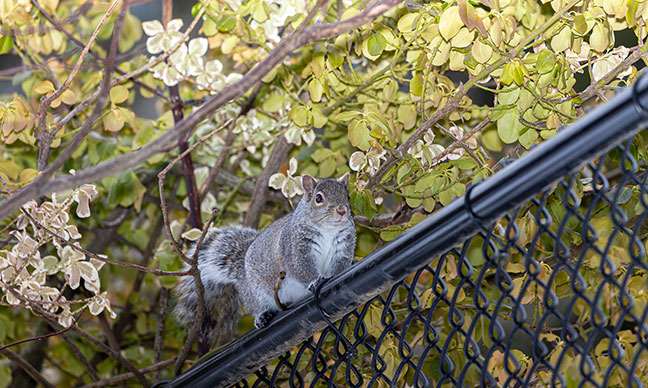Invasive trees are an increasing problem in Texas, taking over forests and landscapes of native species and slowly dislodging them. They crowd out and kill important species that provide clean air, shade, and shelter for wildlife, degrade the soil, leading to erosion, and even increase the risk of a forest fire.
The best way to get rid of invasive trees, you may ask? Avoid planting them. Period! In this post, we share some tips for controlling and stopping the spread of Texas invasive trees to help protect your landscape. Read on!
What Is An Invasive Tree?
An invasive tree is a species that has become a pest, growing and developing aggressively, wiping out other trees. Usually, invasive trees are introduced from other climatic regions and spread rapidly in their new habitat.
The tendency of invasive trees to spread this fast is believed to be partly because the pests and diseases that hinder their growth in their native habitats are not present in the new land, allowing the trees to ‘reign freely’. Invasive trees compete so aggressively against other trees that they sometimes crowd out their challengers, producing a monoculture that inhibits the development and flourishment of other tree species.
What Are Some Invasive Species In Texas?
The hundreds of identified invasive species in Texas include many common trees. Below are five that adversely affect forests and landscapes:
1. Tree Of Heaven
There is nothing heavenly about the tree of heaven; once it finds its way into your property, it will seed prolifically, pushing native trees out and produce toxic chemicals that prevent new ones from growing. Its roots have been found to sprout right through concrete, causing inexpressible damage to sidewalks, culverts, and home foundations.
2. Siberian Elm
Siberian elm is a tough tree that has been found to survive in conditions that most species can’t. This allows it to seize space and nutrients used by native trees, slowly causing them to die. Not just that; Siberian elms attract pests too, one of the major causes of tree diseases in Texas.
Related Post: Texas Tree Bugs
3. Black Locust
While some people may enjoy the shade provided by this tree that grows 100 feet tall, its canopy robs other trees and plants of sunlight, hindering their ability to make food. It also eliminates ground vegetation. And don’t let those fragrant white flowers the tree produces in the spring fool you; they compete with native species for insect pollination.
4. Norway Maple
Norway maple is considered a great shade tree for Texas because of its dense canopy, but this tree has severe environmental impacts. For starters, it grows faster than native trees, with a thick, shallow root system that prevents native seedlings to germinate and get established. Its seedlings are quite shade-tolerant and are the only thing that survives under the tree. The dense shade it produces also prevents other species from surviving under the tree.
Norway maples have also been found to absorb huge amounts of water and nutrients from the soil, which further affects the surrounding vegetation.
5. Russian Olive Tree
Another species that has been found to terrorize native trees in Texas is the Russian olive. While it has amazing wind-breaking and decorative properties, the Russian olive deprives the surrounding trees and plants of essential resources. It adapts, grows, and reproduces quickly, making it a dominant species.
How To Stop The Spread Of Texas Invasive Trees
Precise and careful application of herbicides can help manage the growth and development of invasive trees in Texas. If you have a large invasive tree in your property that you would like to get rid of, however, it would be wise to enlist the services of a professional tree removal Texas company. If the tree is small, you can safely cut it yourself.
Herbicides should be applied to the cut part of the stump and this should be done within twenty-four hours. But this will likely not kill the deeply established root system with the first application. Suckers will still continue to grow for most invasive trees even after the tree is cut. However, if the same herbicide treatment is applied to the root system every time the suckers are removed, then over time the unwanted root system will die and will not produce any more suckers.
Disposal Of Invasive Trees
As stated above, the best way to get an invasive tree off your property is by involving an expert. However, if you are one of these people who like a good challenge and would like to remove the tree yourself, make sure to dispose it right.
Leftover plant material can give rise to new infestations, making it difficult to manage invasiveness. There are many ways through which you can get rid of invasive tree remains. Here are a few:
- Burning: Put the tree material in a brush pile and burn it following the local safety rules and regulations.
- Composting: Pile up your invasive plant remains and process as compost. Make sure to watch the pile closely for new sprouts and remove as necessary.
- Drying: Place woody debris on an asphalt surface and leave them to dry out for say, a month. Put the leafy material in a trash bag and let it stay out in the sun for one month. This will make it non-viable and you can later dispose of everything with the trash. For this method to work, however, you need to make sure there are no seeds mixed in with the woody or herbaceous material.
The Local Tree Experts Overview
Invasive trees have plenty of harmful effects on the environment; they degrade the soil, drain the land, and dislodge plants that have evolved over the years to make an area their home. Texas invasive trees have become a threat by choking out native species.
Proper tree removal and application of herbicides can help prevent the spread of invasive trees in Texas. It is always a wise idea to involve a professional tree service to make sure the chemical treatment is applied right and any removed material is disposed of correctly.




